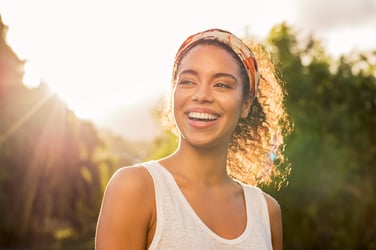Whether enjoying the summer heat, experiencing a heatwave, or heading abroad for a holiday, protecting your skin from the sun is vital. Prolonged sun exposure not only accelerates the ageing process but is also the leading cause of skin cancer. Harmful ultraviolet (UVA and UVB) rays can damage your skin, with long-term consequences.
Here’s your ultimate guide to safeguarding your skin and your loved ones from harmful UV rays and maintaining healthy skin.
How to Protect Your Skin from the Sun
Follow these practical steps to reduce sun damage and keep your skin safe:
- Stay out of the sun during peak UV hours, usually between 11 am and 3 pm.
- Use sunscreen with SPF 30+ and a 4-star UVA rating or higher.
- Wear loose, dark-coloured clothing for added protection.
- Put on a wide-brimmed hat to shield your face and neck.
- Use UV-protective sunglasses to protect your eyes.
- Find shade whenever possible.
- Don’t forget winter sun: Even during colder months, UV radiation can harm your skin.
Choosing the right sunscreen
Look for sunscreen with:
- SPF 30+ or higher for UVB protection.
- 4-star UVA rating or above for balanced protection.
- A formula that suits you, whether it's a cream, gel, spray, or lotion.
How to Apply Sunscreen
- Adults and children: Apply generously 30 minutes before sun exposure and reapply every 2 hours, especially after swimming or sweating.
- Babies: Keep babies under 6 months out of direct sunlight. Use SPF 50+ only on small exposed areas, like the face and hands, if necessary.
Stay covered with sun protective clothing
Your clothing choices can help reduce sun damage:
- Darker colours absorb more UV radiation and offer better protection.
- Thicker fabrics like denim block UV rays better than sheer materials.
- Reflective fabrics deflect radiation effectively.
- Loose-fitting garments provide better coverage without stretching fabric.
- UPF labels on clothing indicate added sun protection.
Don’t forget about vitamin D
The sun is an excellent source of vitamin D, essential for bone health and overall wellbeing. While it’s important to protect yourself, brief exposure to the sun can be beneficial, especially for:
- People with naturally darker skin.
- Those who wear clothing covering most of their body.
- People who rarely go outside.
- Pregnant or breastfeeding women with low vitamin D levels.
Enjoy short periods of sun exposure on your face and forearms but supplement your vitamin D intake with fortified foods or over-the-counter supplements as needed.
What to check your skin for damage?
Regularly check your skin for changes, such as new moles or changes to existing ones. Use the ABCDE rule to identify potential concerns:
- Asymmetry: Uneven shape or appearance.
- Border: Irregular or blurred edges.
- Colour: Uneven or changing shades.
- Diameter: Larger than 6mm or growing in size.
- Elevation: Raised areas or changes in height.
If you notice anything unusual, it’s important to seek medical advice.
When to Speak to a GP
Book a GP appointment if you observe:
- A mole that changes in shape, size, or colour.
- A mole that bleeds, itches, or becomes painful.
- A lump, bump, or new spot on your skin.
Doctor Care Anywhere offers flexible GP appointments via video or phone, 24/7. With the option to upload photos of your skin concern, our clinicians can provide expert advice, recommend treatment, or refer you to a specialist.
Takeaway
Enjoying the sun safely is essential for maintaining healthy skin. By taking simple precautions like wearing sunscreen, seeking shade, and regularly checking your skin, you can reduce your risk of skin cancer and other sun-related issues.
If you’re worried about a mole or have questions about sun safety, book an appointment with Doctor Care Anywhere today. Our GPs and Advanced Clinical Practitioners are available to help you stay informed and healthy year-round.






